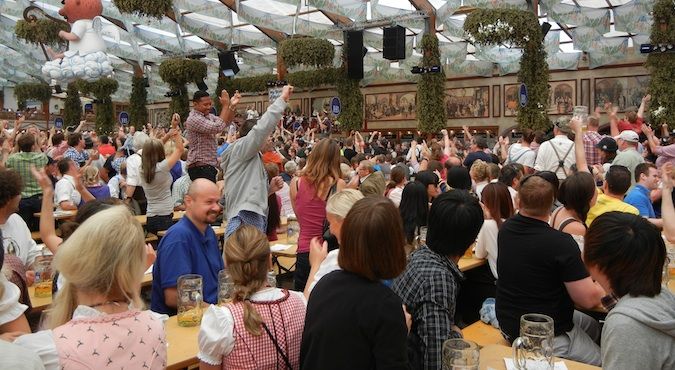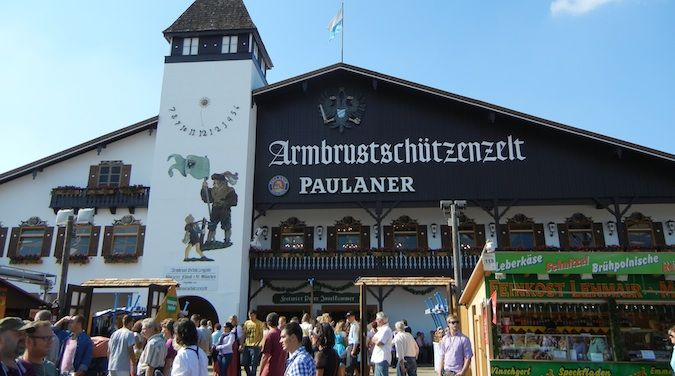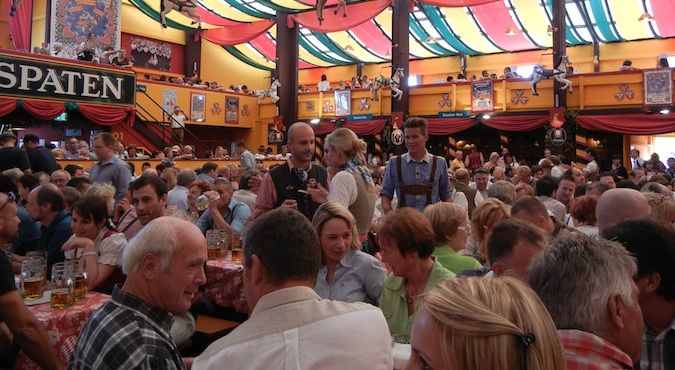Oktoberfest 2018
What is Oktoberfest?
Oktoberfest was one of the best festivals I’ve ever attended. It’s a 16–18-day beer festival held annually in Munich, Germany, running from late September to the first weekend in October. It all began when Crown Prince Ludwig married Princess Therese on October 12, 1810. The citizens of Munich were invited to attend the festivities held on the fields in front of the city, which the locals call “Wies’n” (which means grass, and why Oktoberfest is nicknamed Wiesn in Germany). Ever since then, it has become a major event, especially in the last few decades as more and more international travelers have been attracted to the festival thanks to tours, cheap flights, and better accommodation options. It’s such a big thing that you’ll find Oktoberfest activities in cities around the world (though nothing beats the original).
What to Expect at Oktoberfest
Oktoberfest is a wild, wild time. An estimated 7 million people visit every year, with the majority of those Germans (they represent 85% of attendees)! You’ll see just about everyone dressed up in traditional Bavarian clothes (lederhosen for guys, dirndls for girls), having a good time, and drinking lots and lots of beer. These pictures and video will help paint the scene for you:




You get a lot of people chugging beer….
….and a lot of people who fail at it….
….but no matter what, there’s a lot of singing.
Outside the beer tents, you’ll find a carnival atmosphere. Literally. The grounds contain a carnival with games, rides, and even haunted houses. It is like a theme park in Anywhere, USA. If it wasn’t for people dressed up, you wouldn’t have known you were in Germany. (This is also where you’ll find everyone passed out from too much beer!)
Inside the tents is where you find the traditional Oktoberfest you’ve come for: lots of hearty food, traditional music, large decorated tents, friendly people, large steins of beer, and communal happy atmosphere that breeds friendship and joy! Everyone is here for a good time and in high spirits!
How Much Does Oktoberfest Cost?
All the tents are free to enter. Beer is typically around 11 EUR and most full meals are 12–15 EUR. You can get snacks and small meals for around 5 EUR. You can also buy alcohol outside the tents (but not beer), and the drinks cost around 8 EUR. You’ll also have to put a 2 EUR deposit down on the glass they give you. You’ll find tons of stands everywhere with sausage and wurst for 4 EUR too. Reserving a table is technically free, however, a reservation requires you to order food and drinks. Usually, this is the equivalent to 2 beers and half a chicken (which is around 30 EUR per person). So a table for 10 will be around 300 EUR, depending on the tent.
It’s virtually impossible to do this event on a tight budget. You can buy beer or food outside the event grounds, which will lower your costs (get drunk and full before) but if you’re purchasing anything in the tents, expect to pay!
How to Make Table Reservations at Oktoberfest
All the tents are free throughout the day and all have free tables as well as reserved tables for people eating meals (these are also prime seats in the center of the tent). If you want to eat or guarantee that a table (and not fight for all the free tables), you’ll need to make a reservation. We had a table reservation every day because my friends and I wanted to make sure we had a place to sit. To make a reservation you’ll need to contact the tent directly via email, phone, or fax (yes, they still accept faxes!). This is typically done at the start of the year between January and April. Tables at the best tents fill up quickly.
If you do book at one of the tents, be aware that most tables seat 6-10 people and cost about 300 EUR (about 30 EUR per person). You’re required to book a whole table, so even if it’s just one of you going, you reserve the table as though you are going fill it. While you’re supposed to have a full table when you sit down, we showed up minus a few people and they didn’t seem to care. This reservation includes some beer and food.
Personally, I’m not so sure I’d reserve tables again. It’s nice to know you have a place to sit down, but other than on weekends or at night, it seemed like you could always find an open seat, even if you had to stand for a while. If I booked a table again, I would only do it for the nighttime hours, when tables are harder to get, you’ll want a place to eat, and you might not want to stand around waiting.
Keep in mind weekends, when the Germans aren’t working, are incredibly busy and it’s much harder to get a reservation as well as find free tables. If you don’t have a reservation, get there early!
Thanks to Travel Tourism.
A List of the Best Oktoberfest Tents
There are 14 main beer tents at Oktoberfest and each one has its own personality. Some tend to be heavy on Americans, other Australians, others older Germans, other rich celebrities, while others are just everyone under the sun. Here are the fourteen major tents and some information about them:
- Marstall – This tent holds over 3,000 people and is the newest addition to the event. It’s a bit more modern and inventive (you can actually get vegetarian food here) and caters to a younger, hipper crowd.
- Armbrustschützen-Festhalle – This comfortable tent has also been home to a crossbow competition since 1895! It’s one of the most popular.
- Hofbräu Festzelt – This is the most popular tent for international visitors, especially Americans, and is one of the biggest and most famous tents in the faregrounds. It gets busy but I loved it!
- Hacker-Festhalle – This tent is known for it’s painted blue sky and white clouds on the ceiling that can, if the weather is nice, open up to actually show the blue sky above. It’s also one of the more popular tents.
- Schottenhamel – This is the oldest tent at Oktoberfest and hasthe capacity for over 10,000 people. It’s where the party gets started and is very popular with Germans.
- Winzerer Fähndl – This massive tent is the largest at Oktoberfest with room for 11,000 partygoers. You’ll be able to recognize it by the giant rotating beer glass.
- Schützen-Festzelt – This tent is located off the main drag which means you can sometimes beat the crowds by heading here.
- Käfer’s Wies’n-Schänke – This tent is known to be a favorite of both local and international celebrities as well as their late night ending time! Lots of people finish their night here.
- Fischer Vroni – If you’re tired of all the pork (the main dish in most tents) then head here for something else: fish!
- Ochsenbraterei – This tent has been around since 1881 and is known for its numerous ox dishes and its big brass band.
- Augustiner-Festhalle – This tent is considered to be the most family-friendly option. It’s also the hardest tent to get a table at as many locals have reserved seats here.
- Pschorr-Bräurosl – The Heide family has been running this tent since 1901 and has their own yodeler.
- Löwenbräu-Festhalle – This tent, which has a giant 15-foot lion at the entrance, has a bit more of an older crowd to it. It’s the favorite of local football players.
- Weinzelt – This tent is another more family-friendly choice, with less traditional offerings like seafood, Thai food, and even wine (something you don’t really see often here).
Booking Accommodation at Oktoberfest
Simply put: Book your Oktoberfest room early. Accommodation fills up incredibly quickly — and some hotels and hostels book out up to a year in advance. The closer you get to the festival grounds, the more expensive beds are and the quicker everything fills up. I booked a room in April and most places were already sold out. That room cost me 120 EUR per night, but it was close to the festival grounds. Hostel dorms often go for 60–80 EUR.
There’s not a lot of budget accommodation around but there are a few options if you don’t want to stay in the city center (or want to save money):
- Stay at The Tent, a hostel (well, really, a massive tent) outside the city for 40 EUR per night.
- Couchsurf (which is hard, because locals get a lot of requests from people looking for a free place to stay) or have friends you can stay with.
- Using Airbnb is another good option as long as you book in advance.
Info Source : Oktoberfest 2018
Comments
Post a Comment